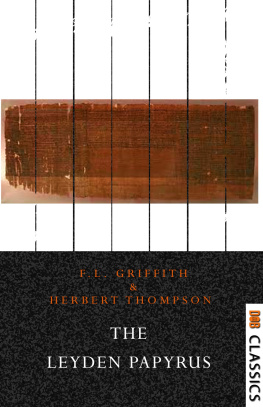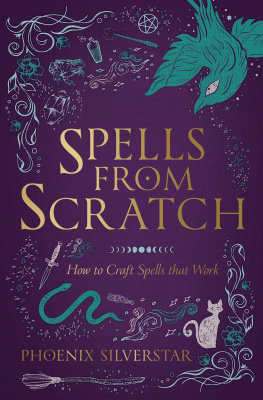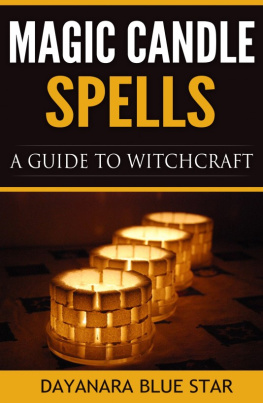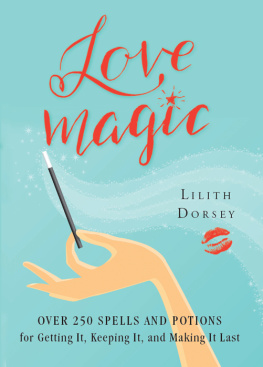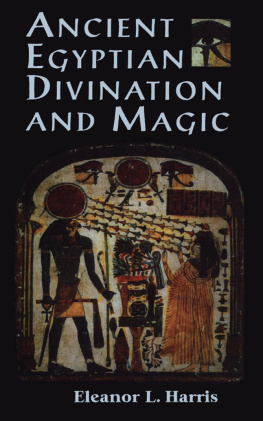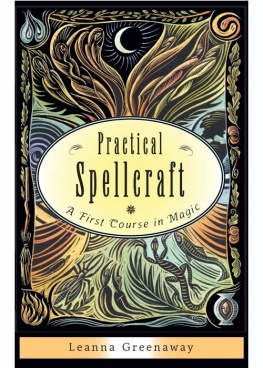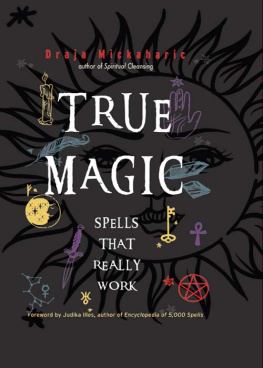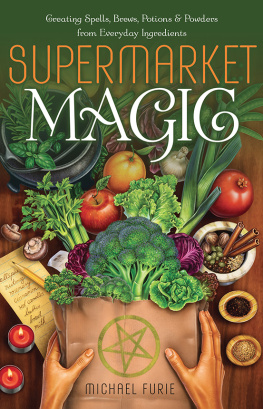THE LEYDEN PAPYRUS
EDITED BY
F.L. GRIFFITH
&
HERBERT THOMPSON
1904
Contents
Preface
THE MS., dating from the third century A.D., which is here edited for the first time in a single whole, has long been known to scholars. Its subject-matter--magic and medicine--is not destitute of interest. It is closely connected with the Greek magical papyri from Egypt of the same period, but, being written in demotic, naturally does not reproduce the Greek hymns which are so important a feature of those papyri. The influence of purely Greek mythology also is here by comparison very slight--hardly greater than that of the Alexandrian Judaism which has supplied a number of names of Hellenistic form to the demotic magician. Mithraism has apparently contributed nothing at all: Christianity probably only a deformed reference to the Father in Heaven. On the other hand, as might have been expected, Egyptian mythology has an overwhelmingly strong position, and whereas the Greek papyri scarcely go beyond Hermes, Anubis, and the Osiris legend, the demotic magician introduces Khons, Amon, and many other Egyptian gods. Also, whereas the former assume a knowledge of the modus operandi in divination by the lamp and bowl, the latter describes it in great detail.
But the papyrus is especially interesting for the language in which it is written. It is probably the latest Egyptian MS. which we possess written in the demotic script, and it presents us with the form of the language as written--almost as spoken--by the pagans at the time when the Greek alphabet was being adopted by the Christians. It must not be forgotten, too, that this is the document which contributed perhaps more than any other to the decipherment of demotic, partly through its numerous Greek glosses.
We have therefore thought that a complete edition, with special reference to its philological importance, would be useful. The vocabulary is extensive, comprising about a thousand words. The present volume, containing the introduction, the transliteration, translation, and notes, will be followed by a complete glossary, with separate indices of Greek words, invocation names, names of animals, plants, and minerals, and a list of the glosses, &c., besides a chapter dealing with the principal grammatical forms met with in the MS., and a hand-copy of the text; the photographic reproduction by Hess of the pages in the British Museum and Leemans' facsimile of those at Leiden will of course preserve their independent value for reference, as, for instance, in judging the condition of the MS. and the precise forms of the signs in particular passages.
There is considerable inconsistency in the spelling of words in the papyrus itself. So much having to be rendered more or less conventionally, while fresh light is thrown daily on the intricacies of demotic, it is probable that there are a good many inconsistencies in our transliterations, translations, and notes, in spite of the watchfulness of the excellent reader at the Clarendon Press. Those, however, who have dealt with the subject at all will probably not judge these too hardly.
In conclusion, we have to record our gratitude, first, to our predecessors in publication and decipherment of the papyrus--to Reuvens, Leemans, and Hess, to Brugsch, Maspero, Revillout, and W. Max Mller--but for whose varied contributions our task would have been infinitely more laborious even in the present advanced state of the study: and secondly, to the authorities of the Egyptian department in the British Museum, and of the Rijksmuseum in Leiden, for their courtesy in affording every facility for studying the original MS., and more especially to Dr. Boeser of the Leiden Museum for much kindness and assistance.
F. LL. G.
H. T.
Introduction
I. HISTORY OF THE MS.
THE demotic magical papyrus of London and Leiden was discovered at Thebes with other papyri, principally Greek but dealing with subjects of a like nature, in the early part of the last century, and was bought by Anastasi, who was at that time Swedish consul at Alexandria, and made a large collection of Egyptian MSS. When Anastasi obtained the MS. it must already have been torn into two parts, and it is even probable that he obtained the two parts at different times, since he sold his Egyptian collections, including the Leiden MS., to the Dutch government in 1828, while the London portion was bought at the sale of his later collections at Paris in 1857 for the British Museum (No. 1072 in Lenormant's Catalogue).
The Leiden fragment was made known to the world much earlier than that in the British Museum. Its importance for the deciphering of the demotic script by the help of the numerous glosses in Graeco-Coptic characters was at once perceived by the distinguished scholar Reuvens, at that time Director of the Leiden Museum of Antiquities, who proceeded to study it carefully, and in 1830 published an admirable essay . Heinrich Brugsch studied it closely, and drew from it most of the examples quoted in his Demotic Grammar published in 1855; but, although later scholars have frequently quoted from it and translated fragments of it, the MS. has hitherto remained without complete translation, commentary, or glossary.
The London MS., however, lay from 1857 onwards almost unnoticed in the British Museum. To the late Dr. Pleyte, Leemans' successor at Leiden, belongs the credit of discovering that the two MSS. originally formed one. He had studied the Leiden portion, and at once recognized the handwriting of its fellow in London. Without publishing the fact, he communicated it to Professor Hess of Freiburg, when the latter was working in Leiden on the MS. there. Professor Hess went on to London, and, having fully confirmed Dr. Pleyte's statement, published in 1892 a reproduction of the British Museum MS. with an introduction, including the translation of one column, and a glossary .
Reuvens in his essay dwelt at some length on the 'gnostic' character of the MS. He devoted his attention mainly to the parts which contain the glosses, and those are almost exclusively magical invocations, among which occur the names of gods, spirits, and demons, Egyptian, Syrian, Jewish, &c., strung together in a manner similar to those found in gnostic writings and on gnostic gems. He even went so far as to associate them with the name of a particular gnostic leader, Marcus, of the second century, chiefly on the ground of his recorded use of Hebrew and Syriac names in his invocations and the combinations of vowels. In consequence the MS. has acquired the name of the 'Leiden Gnostic,' and the term 'Gnostic' has been passed on to the London MS. But as will be seen from the complete translation here published, there is nothing in the work relating to the gnostic systems--it deals with magic and medicine, and it seems a misnomer to call the MS. gnostic merely because part of the stock-in-trade of the magician and medicine-man were a number of invocation names which he either picked up from the gnostics or derived from sources common to him and them. Hence it has been thought desirable to abandon the epithet 'gnostic,' and to call the work the 'Magical papyrus of London and Leiden' (Pap. mag. LL.).
II. CONDITION OF THE MS.
The London portion is in far better condition than the Leiden portion. The papyrus is pale in colour and the ink very black; consequently where the MS. has not suffered material damage it is easy to read, as the scribe wrote a beautiful and regular hand.
The Leiden papyrus, on the other hand, has unfortunately suffered much, as Leemans, with a view to protecting the surface, covered both recto and verso with 'vegetable' paper, which probably could not be removed now without serious injury to the MS.; but either the paper or the adhesive matter employed with it has darkened and decayed, rendering the writing illegible in places.
Next page
